Seven decades of Cumberland Avenue memories told as one crazy night on 'the Strip'
Cis Lee stares down the aisles of the Booth Theatre looking for any two seats that aren’t broken.
Motion pictures were revolutionary when the Cumberland Avenue theater opened in 1928, with state-of-the art projection equipment and a 600-person auditorium described as like “coming home to a cozy room.”
It's 1957 when Lee is searching for seats, the theater is in its decline, and it will be closed by the time University of Tennessee at Knoxville student Jackie Munsey graduates in 1970.
Cumberland Avenue change is inevitable, which means your favorite business will one day close its doors.
But that doesn’t cross Munsey’s mind at The Place, where 10 cents can get you a beer, as long as you’re fine drinking from a paper cup. Happy Hour is underway at 4 p.m., and The Loved Ones are preparing which Steppenwolf songs they will sing tonight.
All is right in the world as, nearby, fellow student Bill Horton is about to make an incredible discovery.
CUMBERLAND AVENUE NIGHTLIFE 1960s THROUGH 1980s
On a normal night, Horton might be found at the Krystal on Cumberland Avenue, spelling his initials in mustard atop an oniony burger near a table of girls who couldn't be bothered to get dressed and who are wearing overcoats to hide their nightgowns. But he’s going “all the way” tonight with a pizza from the Roman Room, affiliated with Sam & Andy’s, considered by many to be the heart and stomach of the Strip.
Growing up in the countryside of Rogersville, Tennessee, Horton hasn’t been fully exposed to the wide array of toppings that can be placed on a pizza – a staple of any college diet. So, when his order arrives with “salty tidbits,” someone needs to explain to him the concept of anchovies.
Surprisingly, this is the night it all began for him: a “lifelong love affair” with the fishy toppings. Who knew?
And who knew that Carol Ronka would ignite her own love story upon meeting her future husband at the Varsity Inn during a summer quarter before graduating in 1968? Without a meal plan, this is one of her favorite places to eat, and the same could be said for Ann Ward.
After all, the Varsity Inn hamburgers, which are rung up on the register by quarterback Bobby Scott, are far superior to the parked food trucks collectively known as the “Roach Coach" near the Orange and White Bookstore.
Ward arrives on campus in 1970, the dawn of a new decade in Cumberland Avenue’s cyclical life as a central hub for socializing. But it’s also where students, like Sandy Minkoff and his two roommates, live for just $70 per month with two roommates. Sure, the single-bedroom living quarters is in the Monday Hotel’s basement, which also serves as the storage area for coal delivered down a chute. It’s not luxurious, but it’s affordable and in the action on the Strip.
Back at the Roman Room, Mark Hancock sits down to enjoy manicotti at the suggestion of its proprietor George Captain. George brings two iced teas to the table to avoid an extra trip for refills. It’s going to be a busy night.
Nearby, Jim Hamlett doesn’t think much of the motorcycle maneuvering through a crowd on Cumberland Avenue, other than its driver looks happy as he revs the engine with a grin. His handlebar mustache would make Yosemite Sam jealous, Hamlett thinks to himself, as the driver disappears in biker gear and a furry vest.
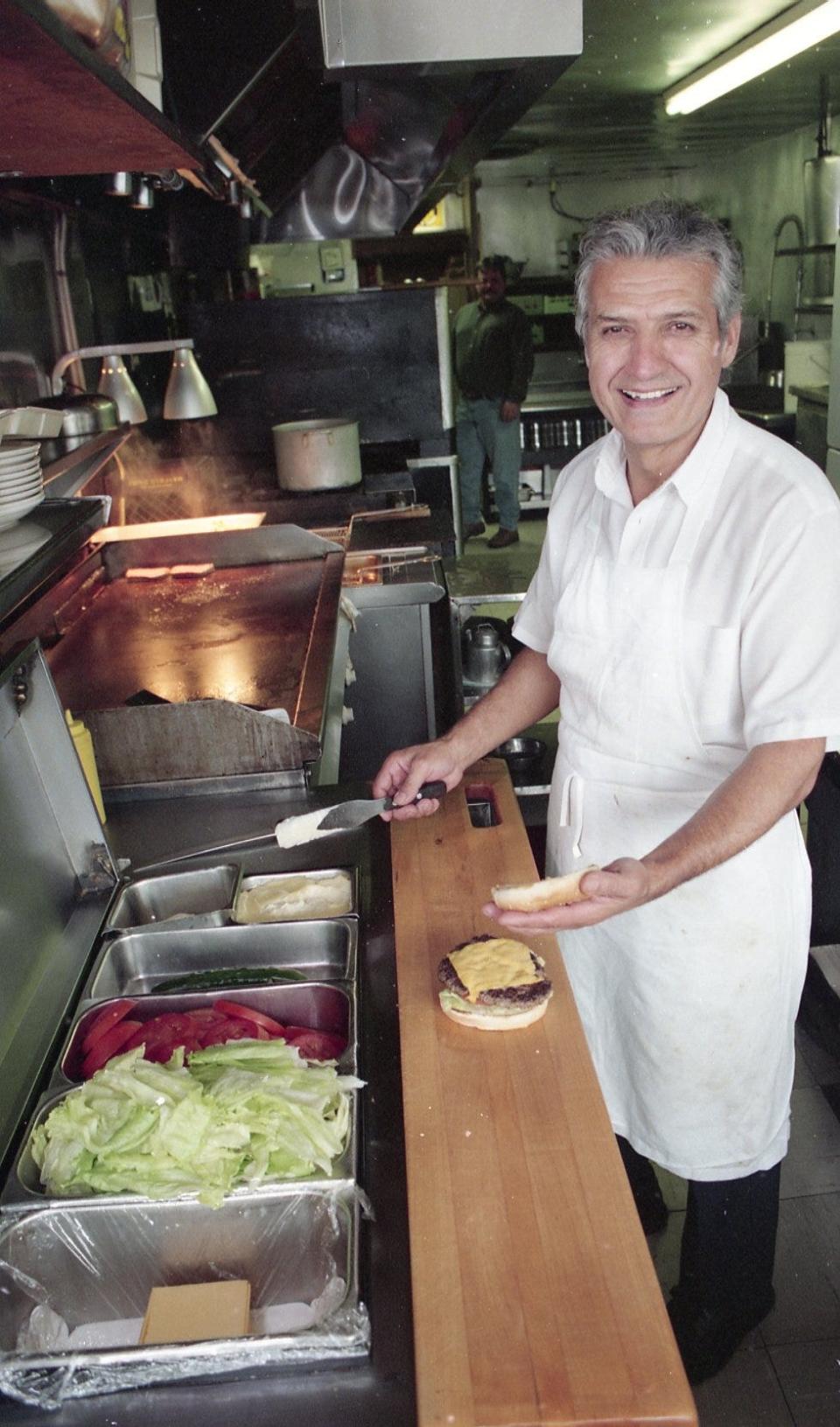
But after about 10 minutes, the biker returns from the opposite direction, wearing the same furry vest – and nothing else. Nights like these put Knoxville on the map as the streaking capital of the world, according to Walter Cronkite, although the craze is short lived.
Steve Hillenbrand spots a naked person atop the bull on Sam & Andy’s, and another “extremely hairy fellow” in a sombrero riding on the back of a car taking videos of the crowd.
Hillenbrand recalls an earthquake rocking his room at the corner of 19th Street and White Avenue around 3 a.m. and his roommate suggesting a nearby bank must have blown up a block away. But even that wouldn’t have been as shocking as the naked craze before them in 1974.
But once the craze dies down, clothes are needed. Kenneth Roberts picks out “dapper" menswear from a store whose name he can’t remember – only that “the proprietor wore a fabulous groomed beard.”
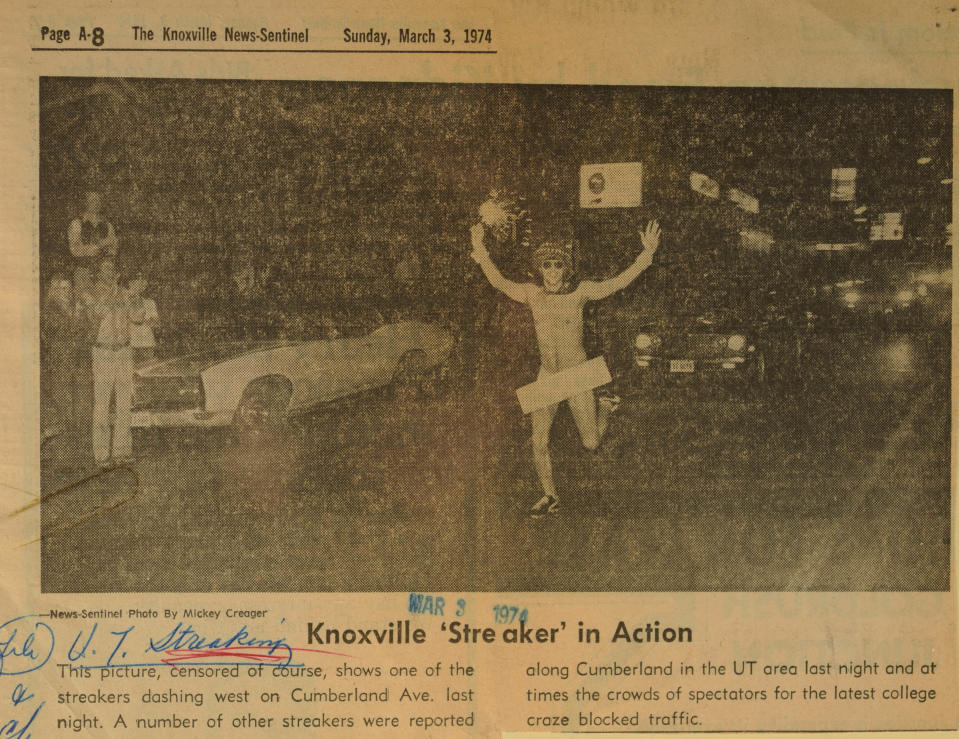
Hancock shops at McMillin’s, a small store for factory rejects and overruns, while Ward buys women’s clothes from Conley E. Morris between errands at the House of the Hobbit head shop and Eddie’s Package Store, which gladly accepts a check for payment. She stops for a moment to chat with Squiggy, a local homeless guy many people are happy to help.
Students arrive at Karnes Drug Store, but the door has just been locked. Owner John Karnes has closed up shop early to photograph the big game on this October evening, but excitement already started building on the Strip the night before. Alabama is in town.
Sure, the celebration after the Wake Forest game was crazy. Hillenbrand secured a police escort to Gay Street from some understanding officers looking to disperse the crowd. But on this night, Steve Wilson watches partying college students spill onto the sidewalks – and then, onto the street. They stop a car with an "unfortunate Alabama state tag" and begin to rock it back and forth. The driver gets out, waving a gun.
This is unusual, Wilson recalls.
Dawn Marsh always feels safe on the Strip.
She arrives on campus in 1980 and buys a custom jersey with the letters of the fraternity where she was a little sister, as well as some 80s fabulous diaper shorts. Her legs look great in the new digs, she thinks to herself, and her mom agrees. Her father – not so much.
Marsh stops in a pharmacy for Hawaiian Tropic tanning lotion – not sunscreen – to darken her skin while laying out on the dorm roofs. She stays cool on this hot summer day with a six-pack of TaB, the only diet soda at the time, which fortunately is kept in stock at the Tap Room. Joe Cervetti is sitting at the bar when she arrives, enjoying a "Big Gulp" after a round of Long Island Teas at the Last Lap. Squiggy is not around, but Chief had stopped on "the Strip" earlier for a beer and tried to sell Cervetti an iron. He’s not sure why.
Great tunes are blaring from the jukebox, Marsh thinks to herself, but Todd Stamper prefers to pick his own music. He stops at Raven Records, tucked behind Walgreens, and then visits Cats Records for its good selection of posters. You might also find a poster inside the latest Playboy Magazine, available for customers to browse at the Arcade Barber Shop while waiting on a cheap haircut. Stamper doesn’t oblige; he has somewhere to be.
The U-Club and O’Charley’s both sound great. But, while Antonio’s Pizza is just OK, Stamper decides to visit anyway for Blue Whale cocktails – the absolute best in town. He makes this decision as Mark Batson settles in for the Ivy’s beer bust: $3, all you can drink.
Batson learned his lesson last time and comes prepared with his own cup. Those wimpy, 8 oz. servings the bartenders hand out are “woefully insufficient,” he says, as three long lines of thirsty students wind around the bar.
It’s a bit too crowded to order a drink, and his friends don’t feel like dancing. They walk outside to the bar’s annex and enjoy the same $3 beers, along with 10-cent wings and darts. He’s happy just to be here, having made it inside with only his student ID, which doesn’t include his birthday.
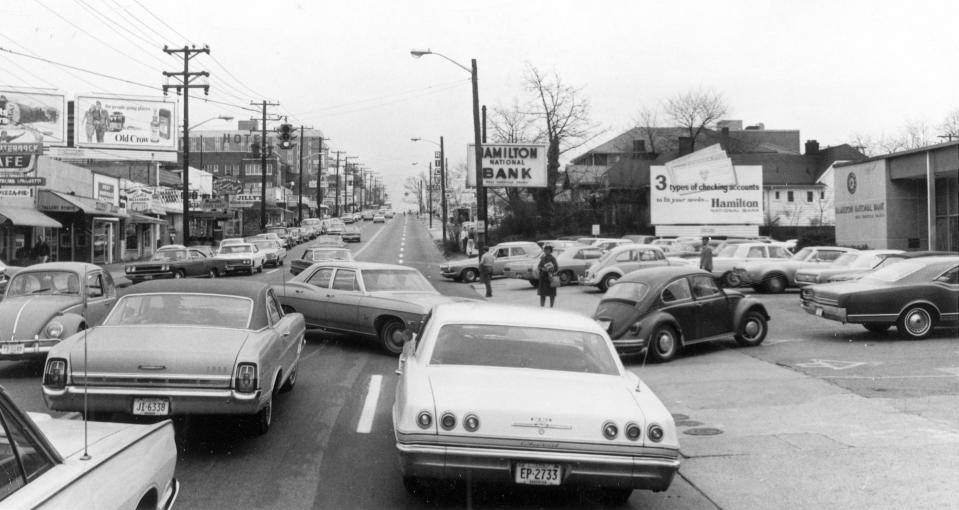
***
Cumberland Avenue nightlife 1990s through today
Students born in the early ‘80s get their first taste of the Strip in the ‘90s. Has the culture changed? It seems all students want to do is hang out at The Library – at least that’s what Jamie Stout’s parents think.
In reality, Stout’s favorite bar shares its name with the place students cram for finals. Stout walks in with a broken collarbone, but his ears could also be damaged by the time he leaves. A surprised group of shrieking friends win a trophy for worst singing and best performance, as Stout finishes his drink and makes his way to Flamingo’s.
A group of football players are there, and one bumps into Stout. Noticing the sling, the player “profusely” apologizes. The encounter is minor, but Stout is happy the athlete played it cool.
Stout is there in ’98 when Tennessee beats Florida, and he helps make sure the Neyland Stadium goal post finds a new home. The piece he’s carrying ends up at Rocky Top Books, where the manager asks students to bring it inside before handing them markers to sign their names. Stout will return in the coming years to see his little piece of Vols history.
But even that excitement can’t compare to January 1999, when Tennessee brings home the big one. The city hires extra security in anticipation of pandemonium reigning once again in the national championship game, with 250 officers compared to its normal Monday night contingent of 50.
Officers have their hands full throughout the ‘90s, as everyone wants to experience the Strip. Jenna Wise is just a senior in high school when she sees a new TV show highlighting dancing crowds at Moose’s, home of the foam parties. She recruits her friend for a mission: Make it on TV next week. The strategy: Wear lots of leopard print.
Wise, the designated driver, stops for gas but pulls into oncoming traffic as she leaves the BP. Blue lights flash in the rear-view mirror. Though the car is full of “underage drunks,” the officer cuts some slack to the self-described “well-meaning airhead” serving as tonight’s sober ride home.
Drinking and running also can be dangerous, especially uphill. Erin Hatfield watches as the next bold soul attempts the "Boone’s Farm Challenge." The timer starts, the patron chugs – but only half. Next is the sprint to the top of 17th street and back down to Fort Sanders Yacht Club, where the other half of the flavored wine is awaiting a chug. No puking for an hour if you want your name on the leaderboard displayed above the bar.
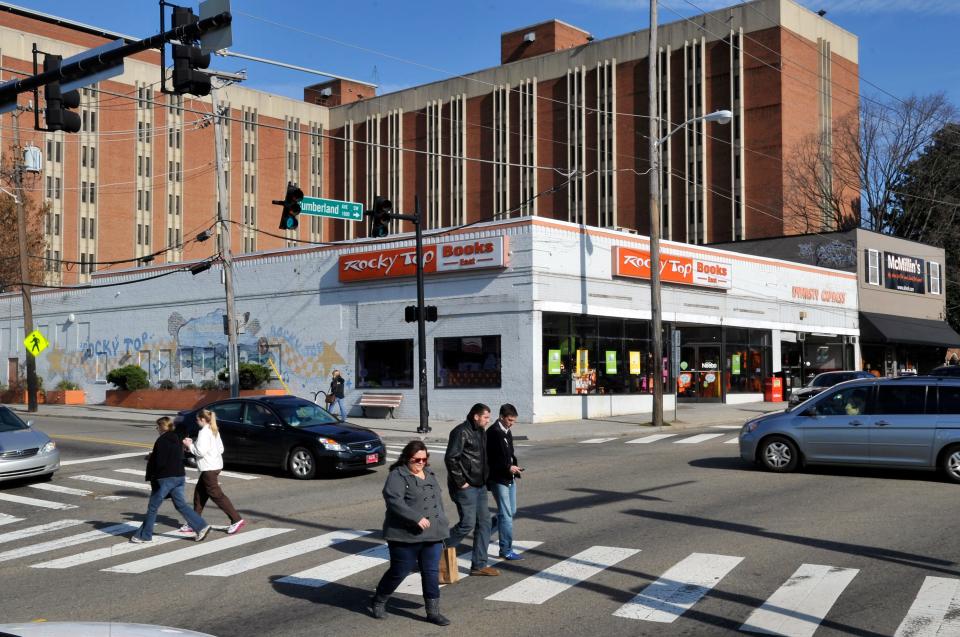
Shortly after arriving on campus in 2005, Hatfield picks the Yacht Club as her home away from home. As she gets to know the bartenders, who enjoy watching trash TV just as much as she does, Hatfield begins bringing punched-out loyalty cards from her nearby workplace to trade for beer between shifts.
The Vols might not be winning national championships, but the excitement is still strong. Julia Hurley is not even a student at UT in the early 2000s but hangs out with her sister on the Strip. They go from Hanna’s to the Old City, and then back to the Strip and the Fort – that’s the routine. After the game, mattresses are stacked for balcony jumps and, of course, they are set ablaze.
A metal band leaves the Longbranch Saloon after their set for a bathroom break at the far-cleaner Taco Bell next door. The Secret City Sewer Monsters take the stage next.
Hatfield is behind the Yacht Club bar now, pouring drinks as a celebrity server. With enough tips, she will be able to pay for a U-Haul to move her life to Florida. But tonight, after the crowds disperse, the regulars will go to the bartender’s house, whose single lightbulb in the living room is powered by an extension cord from the neighbor’s upstairs outlet. Croquet in the field next door is a tradition.
This tradition won't last forever, but sometimes traditions come back.
Stone Weigandt carries a goal post the length of the Strip, as police sirens bounce off a tunnel of modern buildings. The street looks extra orange tonight, even by Tennessee standards.
It's Oct. 15, 2022: A night Weigandt will never forget. But where does the University of Tennessee go from here?
Weigandt is worried for new students and the stories they’ll hear – timeless accounts of packed bars on the Strip and the eccentric characters and friends met there. Hundreds of new apartments are taking over lots where longtime businesses once stood, as the university experiences record enrollment.
But the end of an era marks the start of a new one.
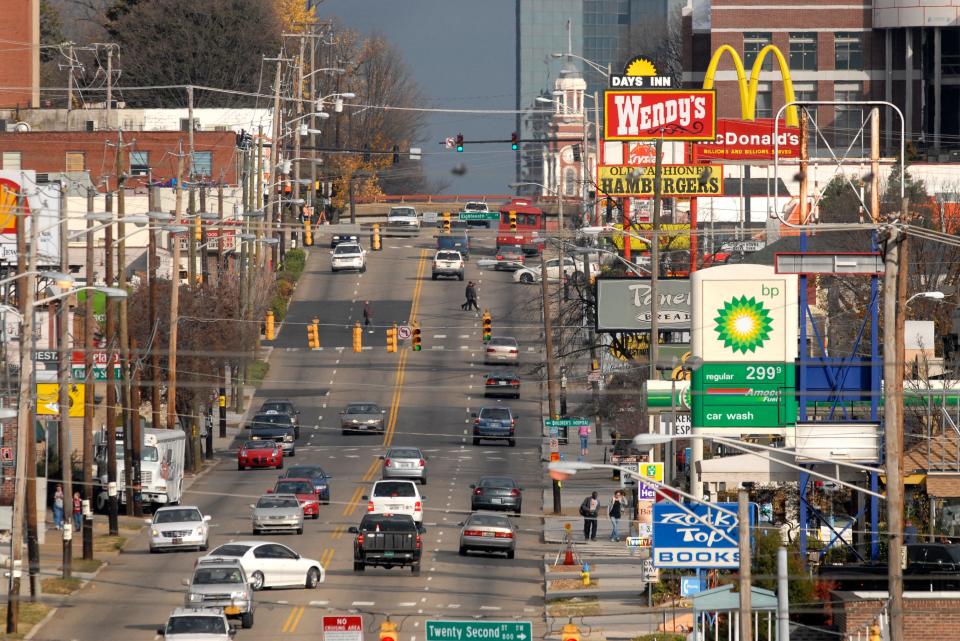
Ryan Wilusz is a downtown growth and development reporter. Phone 865-317-5138. Email ryan.wilusz@knoxnews.com. Instagram @knoxscruff.
Support strong local journalism by subscribing at knoxnews.com/subscribe.
This article originally appeared on Knoxville News Sentinel: Cumberland Avenue nightlife memories as Knoxville 'Strip' changes

